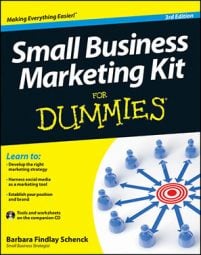Press releases are also called news releases, and they can be used to market your small business online and in print media. A press release can highlight news or events related to your small business, and attract additional interest in your service or product.
Options for distributing your small business press release
Whether you distribute your release via traditional media or online, after you circulate it to media outlets, amplify your news in the following ways:
Post your release on your own website before distributing it elsewhere. That way search engines will point to your site as the origin of the content. Beyond that, when people, including reporters and bloggers, land on your site, your release can lead to unexpected and valuable coverage for your business.
Post your release on social media.
Distribute your release to those of influence to your business, including clients and those in a position to refer business your way.
Post the release within your company. Employees should never have to learn their own company’s news through the media.
Write a memorable small business press release
When developing news releases, whether for print or electronic distribution, first decide on an angle from which to present your news. This involves deciding what makes the facts you’re sharing timely, interesting, and worthy of media interest. Good publicists present the same news from a number of different angles — one for the local media, one for distant or national media, one for industry media, and so on.
In all cases, your release needs to cover the following points:
Contact information so that recipients can find out more if they want to.
A date that the news can be released — most often For Immediate Release but occasionally after a specified date or time.
A headline that’s active (in other words, it should include a verb), succinct (it should fit on no more than two lines), and benefit-oriented (it should tell what’s in the news for the media audience).
A dateline that states the city and state from which the release originated, followed by the date the release was issued.
A clear presentation of the facts, including a summary of who, what, where, when, why, and how in an inverted pyramid style. That means revealing the most important news details in the first sentence and unpacking your next most important facts sequentially into the following paragraphs, ending with the least important but necessary details.
A short closing paragraph, called a boilerplate, that summarizes information about your company.
| Attributes of Releases That Get Results | Attributes of Releases That Get Tossed Out |
|---|---|
| Feature timely news about your products or services, your staff, recent legal or legislative actions, industry changes, or other items of interest to the public. | Contain promotional messages, convey recycled stories that have already been covered by competing news media, or present self-serving puff pieces. |
| Are customized messages tailored to the audience of a specific news vehicle, often accompanied by a brief note written to an established editorial contact. | Are blanket mailings that relay the same exact news to competing media with no unique angle, no offer for interviews, or no other effort to customize the story. |
| Contain crisp, clear, accurate, and factual language. | Are full of superlatives (biggest, brightest, strongest, and so on), opinions, and hype. |
| Describe benefits to the target audience of the media outlet. | Emphasize product features rather than benefits and use insider terminology. |
| Make a clear point regarding why the news is important and how and when people can act upon the information conveyed. | Fail to answer the fundamental question, “Who cares?” |
| Use quotes from management, customers, and industry leaders. | Fail to make a clear point about how the news affects your industry, your business, or, especially, your customers. |
| Are intriguing and believable. | Are boastful or stretch the bounds of credibility. |

